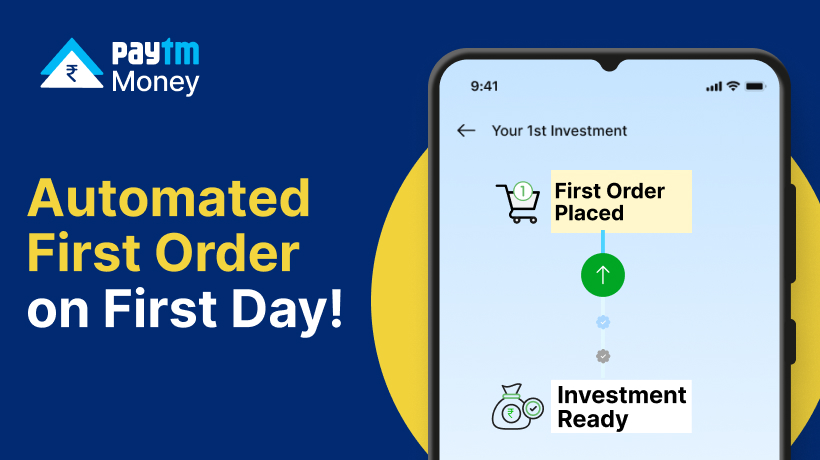Order Level Hedge Benefit4 min read
Owing to an exchange-wide change in margin requirements, margin requirements for hedged positions have been reduced by almost 70% as compared to earlier.
Hedging explained!
Before we proceed further, let us understand the concept of hedging in nutshell. Hedging is nothing more than another type of investment that protects you from incurring financial risk from an unwanted event like a decline in the stock price. This is an advanced risk management tool where a counter position on an asset is taken, such as buying shares of a company and selling futures on that company.
Paytm Money has now introduced Order Level Hedge Benefit, where you are required to maintain a reduced initial margin by getting into a hedge at the order level. You can now benefit from a reduced margin from the initial stage.
Let’s take a sneak peek!
To reap this benefit, the trader has to take two counter positions in the market, as one does when hedging, keeping in mind that ‘the trader has to close the higher margin short position first, and the lower margin long position later also known as hedge position. This will protect the trader from SEBI’s peak margin shortfall penalties. Below, we explain the process in detail.
There are two ways through which brokers provide hedge margin benefits:
- Trade Level Hedge Benefit
- Order Level Hedge Benefit
Trade Level Hedge Benefit
To take advantage of this type of hedge, traders should keep the total amount of margin required in their trading account to execute a trade as orders cannot be executed in case of margin shortfall; the benefit is credited to the trading account once the orders are executed out of the total blocked margin.
For example, if a trader sells one lot of Nifty 30 June 17100 CE for ₹100000 and buys one lot of Nifty 30 Jun 17000 CE for ₹20000 then the total margin required for such trades would be ₹120000, and once the trade gets executed, only then the saved margin amount of say ₹100000 would be transferred back to the trading account.
And to get into another trade, the trader again has to maintain the same ₹120000 in the account.
Order Level Hedge Benefit
As per the new margin policy of NSE, introduced in 2020, the margin requirement for naked F&O options increased, however, traders can reduce the margin paid dramatically by ~70% if they go for order-level hedging, in which case, a trader again has to take two counter positions just like trade level hedge, but this time sequentially to reap the benefit of saving on margins. Yes, a trader has to buy a low margin long position first, and then goes on to sell the high margin short position with a reduced margin requirement, thus increasing the potential ROI on the trade taken.
Referring back to the above-given example, if a trader sells the 1 lot of Nifty 30 Jun 17100 CE then the margin required is ₹100000 in the earlier case, but in the Order Level Hedge process, the trader has to buy the one lot of Nifty 30 Jun 17000 CE first by simply paying the premium amount i.e. ₹20000, also known as the hedge position, and then goes on to Sell the Nifty 30 Jun 17100 CE, as the risk-management system would allow the trader to take the short position at the reduced margin without paying the remaining margin of ₹100000, thus freeing the unused margin amount to take another position.
In the Order level hedge process, traders can take up to 4 pairs of positions in the same margin amount as that in the trade level hedge process.
Note: There is only one caveat to this process. In order to protect traders from incurring peak margin penalties in case of margin shortfall, the system would prevent traders from closing low margin long positions (hedge positions) before closing their sell positions, because sell positions are the highest margin positions, which need to be closed first. In case there is sufficient margin available, traders can close out hedge/lower margin positions first.
Using Paytm Money’s Margin Calculator, you can find out more about margin benefits. Don’t forget to look at our detailed blog about Margin calculator:
https://www.paytmmoney.com/blog/margin-calculator/
Disclaimer: Investments in the securities market are subject to market risks, read all the related documents carefully before investing. This content is purely for information and investor awareness purposes only and in no way to be considered as advice or recommendation. Paytm Money Ltd SEBI Reg No. Broking – INZ000240532. NSE (90165), BSE(6707) Regd. Office: 136, 1st Floor, Devika Tower, Nehru Place, Delhi – 110019.




